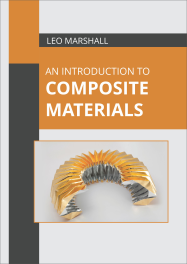An Introduction to Composite Materials
Material type: TextLanguage: English Publication details: New York, Ny : Murphy and Moore Publishing, c2022Description: VI, 236 p. : illISBN:
TextLanguage: English Publication details: New York, Ny : Murphy and Moore Publishing, c2022Description: VI, 236 p. : illISBN: - 9781639870479
- 620.118 MAR
| Item type | Current library | Shelving location | Call number | Copy number | Status | Date due | Barcode |
|---|---|---|---|---|---|---|---|
 Reference Collection
Reference Collection
|
Reference Section | Reference Section | 620.118 MAR | 2022-23 | Available | 98048 |
Summary:
The materials that are produced using two or more constituent materials are known as composite materials. The constituents may or may not have similar physical and chemical properties. Some of the everyday examples of composite materials are plywood, reinforced concrete and fiberglass. Depending upon the structure and materials being used these can be classified into metal matrix composites, ceramic matrix composites, thermoplastic composites, etc. Polyethylene, polyvinylchloride and polyurethane are used extensively as core materials for the formation of composites. The manufacturing of composite materials is done using a wide variety of techniques such as filament welding, lanxide process, z-pinning, tufting and fiber placement processes. Some of the other methods are pressure bag molding, resin transfer molding, braiding, slip forming, continuous casting, etc. This book is a valuable compilation of topics, ranging from the basic to the most complex theories and principles in the field of composite materials. Such selected concepts that redefine composite materials have been presented herein. Those in search of information to further their knowledge will be greatly assisted by this book.
